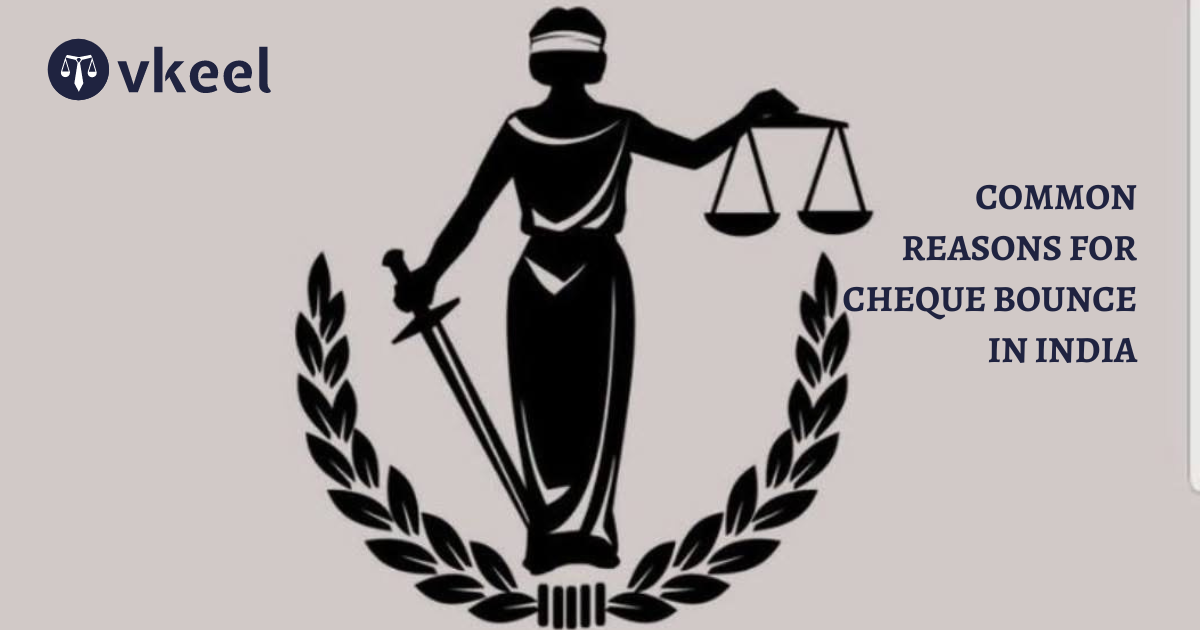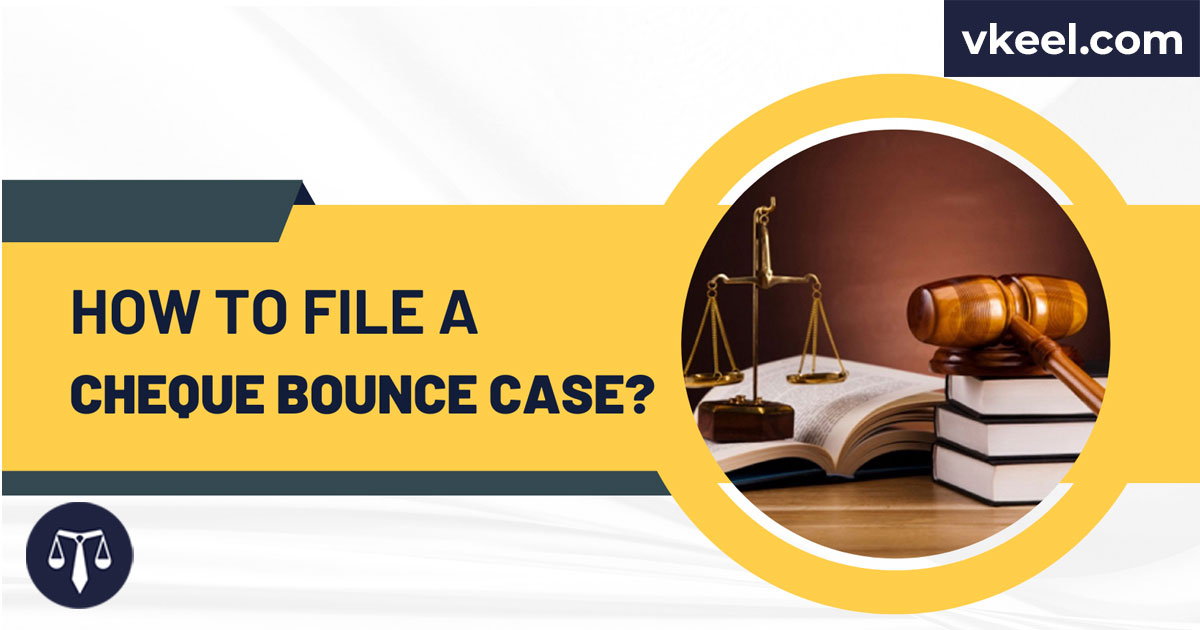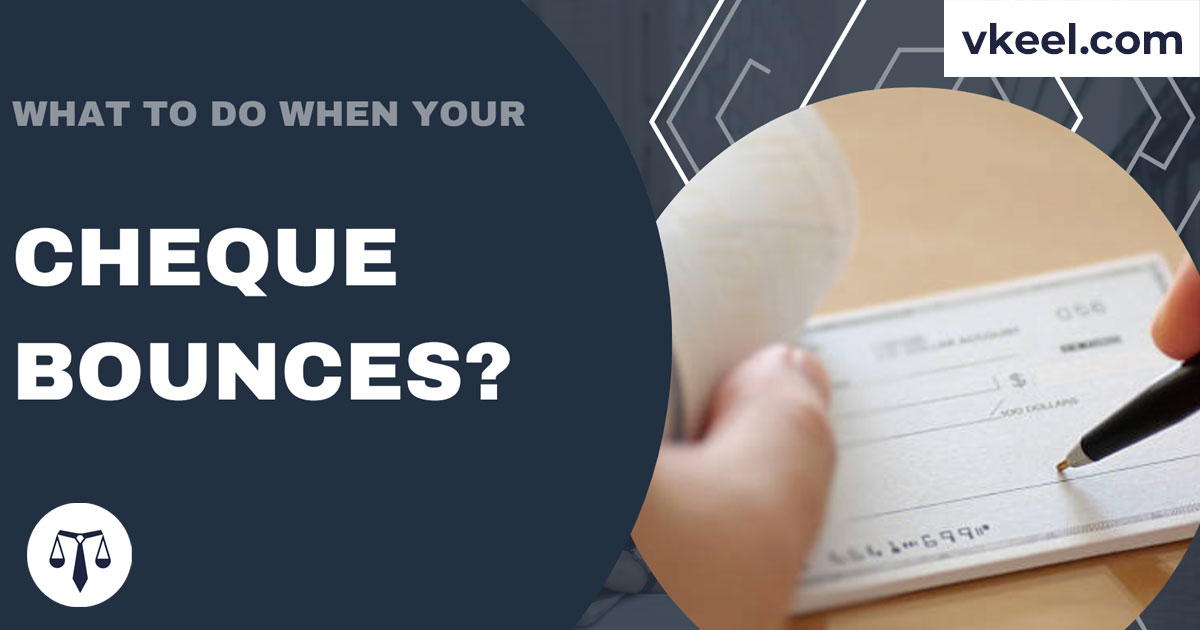COMMON REASONS FOR CHEQUE BOUNCE IN INDIA
By Joy Puri
Table of Contents
WHAT ARE NEGOTIABLE INSTRUMENTS?
Negotiable instruments are legal documents which guarantee the transfer of a specific monetary amount from one party to another. These instruments are a particular form of payment and are easily transferable between the related parties, facilitating commercial transactions and economic activities and thereby proving themselves as a helping hand to the nation’s growth. They provide a high level of security and reliability among the individuals, enhancing trust in business dealings. Negotiable instruments are governed by specific laws and regulations, which vary across jurisdictions but often share common principles. Ensuring legal clarity and enforceability, the regulatory framework outlining negotiable instruments flourish confidence and reliability in financial transactions. It provides the people the mechanisms for dispute resolution and recourse in cases of breach, thus safeguarding the interests of all parties involved in the related case. Consequently, negotiable instruments not only expedite transactions but also foster an environment conducive to economic growth and stability.
A cheque is a pivotal part of negotiable instrument used in financial transactions, serving as a substitute for cash in the Indian economy. It is a written order issued by an account holder instructing their bank to pay a specific amount of money to the person or entity named on the cheque thereof. Cheques are widely used for various purposes by the people such as paying bills, making purchases, or transferring funds to other parties. The essential components of a cheque include the drawer, the payee, the amount to be paid which is written in both numeric and written forms, the date of issuance, and the signature of the payer. The payer’s bank account details, including the bank name and account number, are usually pre-printed on the cheque. Upon receiving a cheque, the payee can deposit it into their bank account or instead take a cash directly at the payer’s bank or a cheque-cashing service. The processing of cheques involves verification by banks to ensure that there are sufficient funds in the payer’s account to honor the payment in the pertaining matter.
CAUSES OF CHEQUE BOUNCE?
Cheque bouncing in India usually occurs when a cheque issued by an individual or entity cannot be honored on the bank’s part which is caused due to insufficient funds or various other reasons. Here are some common causes of cheque bounce in India:
Insufficient Funds: This is the most common reason for a cheque to bounce in India. When the issuer’s account doesn’t have enough funds to cover the amount mentioned on the cheque, it will bounce thereby inviting hurdles to the transaction process.
Mismatched Signature: If the signature on the cheque does not match the person’s signature available with the bank, the cheque may bounce in the related transaction.
Overwriting or Alteration: If there are any alterations or overwriting on the cheque without proper authentication which can be entailed, banks might refuse to honor it.
Stale Cheque: A cheque becomes stale after a certain period, which are generally stipulated as three to six months, from the date of issue. If presented after this period, it will be considered invalid and will thereby result in bounce.
Account Closed or Frozen: If the issuer’s bank account is closed or frozen due to any reason, the cheque issued from that account will bounce.
Post-Dated Cheque: If the cheque is dated for a future date and presented before that date which is mentioned on the cheque, it will bounce unless the issuer has specifically instructed the bank to honor it earlier.
Technical Issues: Sometimes, technical issues within the banking system can also lead to cheque bouncing, though this scenario is not much witnessed in the Indian economic domain.
Crossed Cheque: If the cheque is crossed and the payee tries to encash it directly instead of depositing it into their bank account, it may not be honored, leading to a bounce.
Refer to Drawer (RTP): This happens when the bank cannot honor the cheque due to various reasons like signature mismatch, irregular signature, etc. They mark it as “Refer to Drawer,” and it is returned to the payee’s bank.
Legal Orders: In certain cases, if there are legal orders against the issuer’s account, such as a court order or garnishment, the bank may not honor the cheque.
REMEDIES OF CHEQUE BOUNCE
When a cheque bounces, it means that the bank refuses to honor the payment due to some of the circumstances which are enumerated above. There are some common remedies available to the payee in case of a bounced cheque:
Legal Notice: The payee can send a legal notice to the drawer in the pertaining case, of the cheque demanding payment of the amount mentioned in the bounced cheque within a certain period, typically 15 days. It treated as a warning letter to the respondent party.
Re-Submitting the Cheque: The payee can try to re submit the bounced cheque for payment. Sometimes, the issuer might have deposited funds into their account to cover the amount by the time the cheque is re submitted.
Filing a Complaint: If the payment is still not made after sending a legal notice, the payee can file a complaint under Section 138 of the Negotiable Instruments Act, 1881. This section entails specifically, the offence of dishonoring a cheque for insufficiency of funds in the account.
Negotiation or Settlement: The payee and the drawer can also negotiate a settlement outside the court, either by agreeing on a payment plan or by settling the matter for a lesser amount.
Legal Action: If the drawer fails to pay even after legal notice and negotiation, the payee can go for a legal action by filing a criminal complaint against the drawer. The drawer may face penalties including imprisonment and/or fine if found guilty.
Civil Suit: The payee can file a civil suit for recovery of the amount mentioned in the bounced cheque. In some cases courts also reward damages or interest on the amount mentioned.
LANDMARK JUDGMENTS
Dashrath Rupsingh Rathod vs. State of Maharashtra and Anr. (2014)
This case outlined the issue of liability in cheque bounce cases involving joint accounts. The Supreme Court deciphered that individuals cannot evade responsibility for dishonored cheques by claiming ignorance of transactions from a joint account. It emphasized that all parties to a joint account are equally liable for the transactions made from the antecedent account. This judgment clarified that the mere fact of being a joint account holder doesn’t absolve one from liability in cases of dishonored cheques.
Lalit Kumar vs. State of Uttar Pradesh and Anr. (2013)
This case was deeply concerned on the issue of territorial jurisdiction in cheque bounce cases. The Supreme Court clarified that the appropriate jurisdiction for filing complaints under Section 138 of the Negotiable Instruments Act, 1881, is where the cheque was held dishonored by the bank. This judgment served clarity and uniformity in legal proceedings by providing a clear rule regarding the determination of jurisdiction in cheque bounce cases, thereby preventing forum shopping and ensuring efficient resolution of disputes.
Indian Bank Association vs. Union of India and Ors. (2014)
In this case, the Supreme Court gleamed about the constitutional validity of certain provisions of the Negotiable Instruments (Amendment) Act, 2015, in relation to cheque bounce cases. Thereby in the aforementioned case, the court upheld the validity of these provisions, including those allowing for summary trials in such cases. This judgment affirmed the legislative intent behind the amendments and validated the legal framework established to expedite the resolution of cheque bounce cases, thereby promoting efficiency and reducing the backlog of cases in courts.
Harman Electronics Pvt. Ltd. vs. National Panasonic India Pvt. Ltd. (2009)
This case dealt with the liability of the drawer of a cheque even after making payment subsequent to its dishonour. The Supreme Court had put emphasis that the liability under Section 138 of the Negotiable Instruments Act, 1881, is not discharged merely by making payment after the cheque is dishonoured by a particular bank. This judgment clarified that the drawer remains liable for prosecution under Section 138, irrespective of any subsequent payments made by him in the related case, thereby emphasizing the importance of adhering to legal obligations enshrined in the above mentioned statute.
M/s. Neela Energy Private Limited vs. Canara Bank and Another (2017)
This case had highlighted the procedural aspect of cheque bounce cases, particularly regarding the issuance of proper notice to the drawer of the cheque before initiating legal proceedings under Section 138. The Supreme Court outlined that non-compliance with the notice requirement would render the complaint unsustainable. This judgment underscored the significance of procedural compliance in cheque bounce cases and reiterated the importance of adhering to statutory requirements to maintain the integrity of legal proceedings.
CONCLUSION
Cheque bounces in India have a negative impact on individuals and businesses related to the former. For individuals, bounced cheques can disrupt financial planning, causing inconvenience and potential financial strain if they were relying on the funds. In business transactions, cheque bounce can lead to strained relationships, delayed payments, and additional administrative costs which can prove as the hardships to the people concerned. The rate of cheque bounces fluctuates over time and can vary across different sectors of the economy. Factors such as economic conditions, banking policies, and individual financial practices influence the bounce rate. Additionally, technological advancements such as online banking and digital payments have somewhat reduced the reliance on cheques, but they still remain a prevalent mode of payment in many transactions.
Disclaimer:
The information provided in the article is for general informational purposes only, and is not intended to constitute legal advice or to be relied upon as a substitute for legal advice. Furthermore, any information contained in the article is not guaranteed to be current, complete or accurate. If you require legal advice or representation, you should contact an attorney or law firm directly. We are not responsible for any damages resulting from any reliance on the content of this website.






